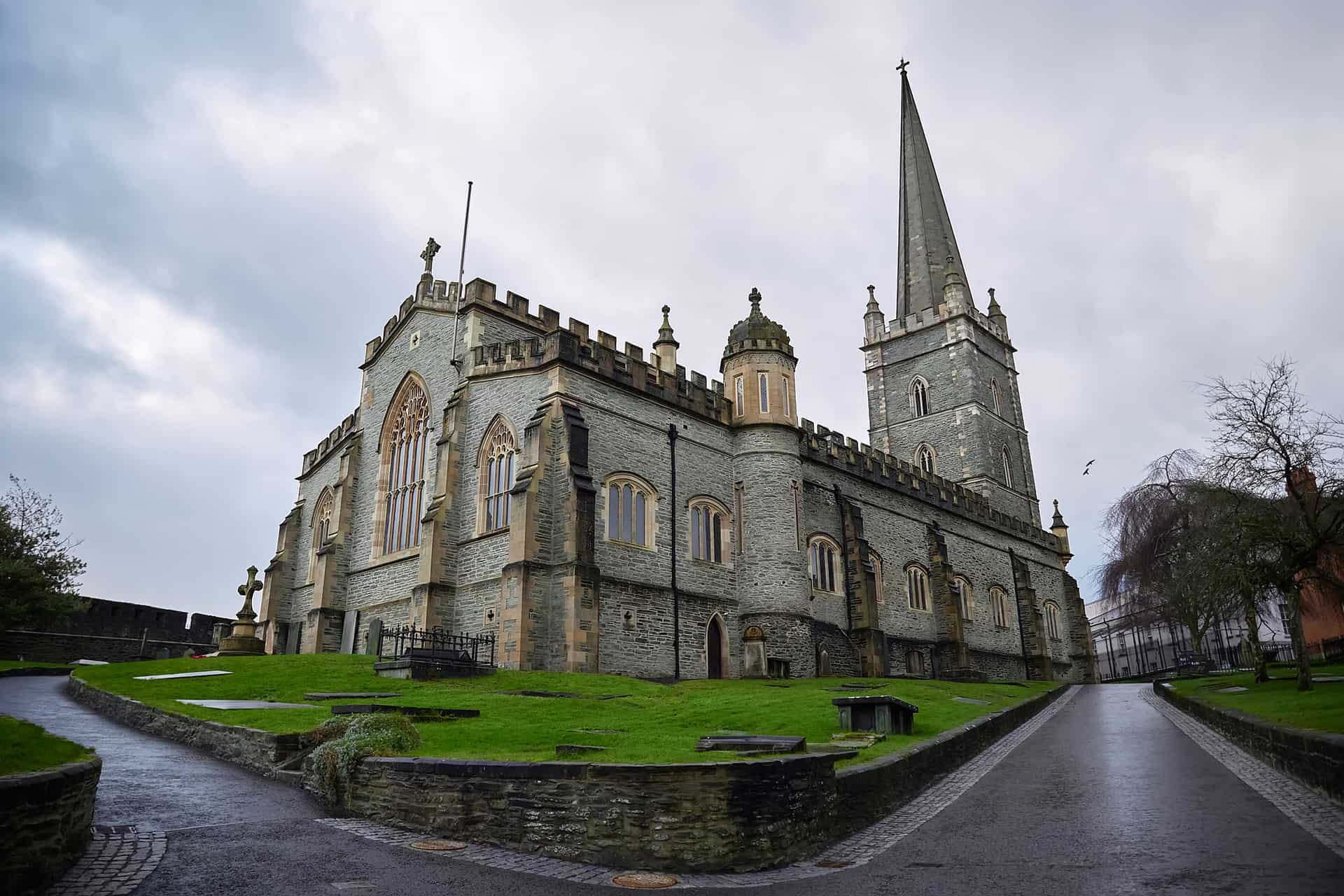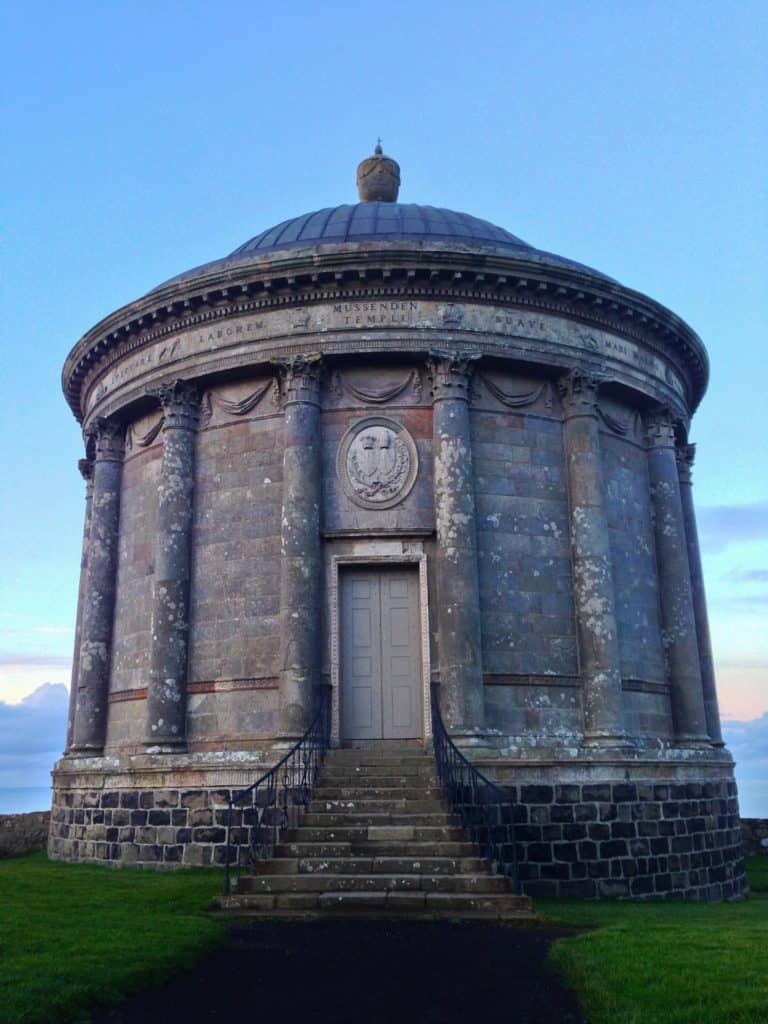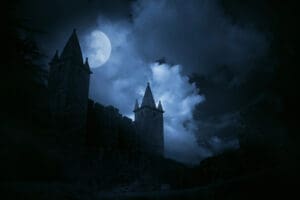Derry~Londonderry-The Maiden City-The Walled City

Updated On: April 07, 2024 by Noha Nabil
Derry City! The second largest city in Northern Ireland! The UK City of Culture in 2010! Several towns in the world are named after it. Derry~Londonderry has been known as The Maiden City as its high walls have never been breached! It is one of the special Londonderrys worldwide, in the United States, Chile, Australia, etc.
Derry On The Map
Don’t miss it and visit the old walled city on the west bank of the River Foyle, County Londonderry in Northern Ireland, spanned by two road bridges and one footbridge. You will notice that the City now covers both river banks (Waterside on the east and Cityside on the west).
How did Derry Come to light?
Thanks to one of the Twelve Apostles of Ireland, St. Columba or Colmcille. That Irish abbot and missionary credited with spreading Christianity was the one behind the emergence of our Derry.
In the 6th century, a monastery was founded at Derry by St. Columba before leaving Ireland for his sacred mission, and people had been living nearby for thousands of years before that. The monastery, or Doire Calgach as it was called then, was on the west bank of the Foyle and its site was granted to Colmcille by a local king who had a fortress there.
Then, the federation of Columban churches controlled it and was regarded as their spiritual mentor. After that, the original settlement was founded in 546 CE. However, historians claim that this date was inaccurate, being assigned by medieval chronicles. Derry was accepted to be a monastic settlement between the 6th and the 11th centuries.
History of Derry – The Maiden City
Derry’s history is rich with significant events that made it essential. Enriching your knowledge with information about the attacks or wars it faced, rebuilding or planting it, have a closer look at how it has been one of the oldest continuously inhabited places in Ireland.
-
Early History
During the Tudor conquest of Ireland, which held the Kingdom of England during the 16th century, the town became strategically more significant and was subject to frequent attacks.
In 1608, the O’Doherty’s Rebellion uprising against authorities in Derry was led by Sir Cahir O’Doherty, an Irish chieftain of the Inishowen peninsula in County Donegal. He led a force of rebels, burnt much of the town and killed the governor, George Paulet. The reputation of “the founder of Derry” was given to Sir Henry Docwra, a soldier and statesman, who exerted extensive efforts developing the town. Still, he returned to England after being accused of failing to prevent the O’Doherty attack.
-
Plantation era & the Story Behind the Name “Londonderry”
Up to 1610, the City of Derry was part of the relatively new County Donegal. The English Crown transferred the west bank to The Honourable The Irish Society. It was combined with a large portion of County Tyrone, County Coleraine, and part of County Antrim to form County Londonderry.
As part of the Plantation of Ulster, which was the organized colonization of Ulster province by people from Great Britain during the reign of King James I, London livery companies brought planters through The Irish Society and rebuilt the town with high walls to defend it from insurgents opposing the plantation. The aim was to settle Ulster with a population supportive of the Crown, which was then named “Londonderry”.
Foundations of the City
This city was the first planned city, typically constructed in an undeveloped area in Ireland. For £10,757, the foundation started in 1613, with the walls completed in 1619. As a good design for defence, the central diamond within a walled city with four gates was the thought born in mind. The chosen grid pattern was later copied in British North American colonies.
Derry’s Oldest Building
The old Irish layout spirit is noticeable in the modern city. It keeps the 17th-century design of four main streets radiating from a central diamond to four gateways—Ferryquay Gate, Bishop’s Gate, Butcher’s Gate, and Shipquay Gate. Amazingly, the city’s oldest surviving building was also constructed at that same time: the Cathedral of St. Columb, the mother church of the Church of Ireland. In the porch, there is a stone with an inscription saying:
“If stones could speake, then London’s prayse should sound, Who built this church and cittie from the grounde”.
17th-century Disturbance
In the 1640s, Derry suffered in the Wars of the Three Kingdoms, or the so-called British Civil Wars, when conflict aggravated in England, Ireland and Scotland between 1639 and 1651. Those wars started with the Irish Rebellion of 1641 when the Gaelic Irish insurgents launched a failed attack on the city.
In 1649, crucial events occurred. The city and its garrison, which supported the republican Parliament in London, were besieged by Scottish Presbyterian forces loyal to King Charles I.
Under George Monck and the Irish Catholic general Owen Roe O’Neill, a strange alliance of Roundhead troops, who were supporters of the Parliament of England during the English Civil War, relieved The Parliamentarians besieged in Derry.
After the landing of the New Model Army in Ireland in 1649, such temporary allies soon began fighting each other. Then, when the Parliamentarians crushed the Irish Catholic Ulster army at the Battle of Scarrifholis, near Letter Kenny near County Donegal, the war in Ulster was finally brought to an end in 1650.
The Siege of Derry
By November 1688, only Derry and nearby Enniskillen had a Protestant garrison during the Glorious Revolution. It was an army of around 1,200 men, mostly “Redshanks” (Highlanders, a historical region in Scotland) under Alexander Macdonnell, third Earl of Antrim, which was slowly organized.
The siege of Derry began when they arrived on 7 December 1688 and found the gates closed against them. Later, King James came to the city and called for surrender in April 1689. The King was rebuffed, and the siege lasted until the arrival of a relief ship at the end of July.
-
18th & 19th Centuries
In the 18th century, the City of Derry was rebuilt, and many of its fine Georgian–style houses still survive. In 1790, the city’s first bridge across the River Foyle was built. Then, the port became a significant stepping stone for Irish emigrants setting out for North America during the 18th and 19th centuries. In the state of New Hampshire, some of them founded the colonies of Derry and Londonderry.
During the 19th century, Derry became also a destination for migrants fleeing areas suffering more from the Irish Potato Famine, in which about two-fifths of the population only relied on potatoes for several historical reasons, about one million people died. A million more emigrated from Ireland causing a fall in the island’s population by 20%–25%.
-
Early 20th Century
What Happened During World War I?
Over 5,000 of Derry’s men joined the British Army from Catholic and Protestant families during World War I.
Partition of Ireland
During the Irish War of Independence, the guerrilla war raging between the Irish Republican Army and British forces was prompted, and the area was rocked by sectarian violence. It was influenced by economic and social pressures, too.
What made it worse, many lives were lost during the sectarian riots in Derry and several Protestants and Catholics were thrown out of their homes during this communal unrest that took place by mid-1920. After a week’s violence, local politicians from both Republican and unionist sides negotiated for a truce.
In 1921, following the Partition of Ireland and Anglo-Irish Treaty, which was an agreement between the government of the United Kingdom of Great Britain and Ireland and representatives of the Irish Republic which concluded the Irish War of Independence, Derry was separated from much of its traditional economic hinterland in County Donegal, so it became a ‘border city’.
World War II Incidents
The city played an essential role in World War II’s Battle of the Atlantic. The Ships from some Allied navies, like the UK Royal Navy and the Royal Canadian Navy, were stationed in the city, and the United States military established a base. That was concluded in a secret agreement between the Americans and the British before they entered the war, forming the first American naval base in Europe and the terminal for American convoys on their way to Europe.
Since Derry was the westernmost allied port in Europe, the reason for such a high degree of military and naval activity was apparent. It was a significant departure point for shipping convoys between North America and Europe. Several airfields were built in the outlying regions of the city: Eglinton, RAF Eglinton, Ballykelly and Maydown, which went on to become the City of Derry Airport.
Smuggling Operations developed
The trade invasion from the military convoys and the City’s border location allowed for important smuggling operations to develop in the city. Eventually, some boats of the German Kriegsmarine, the navy of Nazi Germany, surrendered in the city’s harbour at Lisahally. The initial surrender was attended by Sir Basil Brooke, third Prime Minister of Northern Ireland, and Admiral Sir Max Horton, Commander-in-Chief of the Western Approaches, which is a rectangular area of the Atlantic Ocean and lies immediately to the west of Ireland and parts of Britain.
-
Late 20th Century
From the 1950s to the 1960s
World War II led the city to suffer from development and stagnating unemployment during these ten years. Unfortunately, the trial of having Northern Ireland’s second university located in the city failed. It was a large campaign led by the University for Derry Committee.
Civil Rights
Derry was a focal point for the developing civil rights movement in Northern Ireland at that time.
In Northern Ireland, Catholics were discriminated against under the Unionist government, both economically and politically. In the late 1960s, there was a great debate about institutional gerrymandering. John Whyte, a political scientist, explains that:
All the accusations of gerrymandering, and, the amount of the charges about private and public employment, and all the complaints about housing and regional policy come from the area which consisted of Counties Tyrone and Fermanagh, portions of Counties Londonderry and Armagh, and Londonderry County Borough. The unionist government put through the original gerrymander which underpinned so many of the subsequent malpractices, and then, did nothing to stop those malpractices continuing, despite repeated protests. The most serious charge against the Northern Ireland government is that it allowed discrimination over a great segment of Northern Ireland.
The Battle of the Bogside
The Government banned a civil rights demonstration led by the Northern Ireland Civil Rights Association in 1968. It was blocked by force of the Royal Ulster Constabulary. In 1969, the Battle of the Bogside occurred when the Catholic rioters fought against the police, and that led to widespread civil chaos in Northern Ireland. That was often dated as of the beginning of the Troubles.
During a civil rights march in the Bogside area, which is a neighbourhood outside the city walls of Derry, 13 unarmed civilians were shot dead by British paratroopers on Sunday 30 January 1972. Moreover, another 13 were wounded and one further man later died of his wounds. That incident was called “Bloody Sunday”.
Derry and the Troubles
When the conflict, which became known as the Troubles, widely spread The Civil Rights movement had also been very active in Derry. It was heavily militarized and there was widespread civil unrest in the early 1970s. So, barricades were constructed in several districts in the city to control access and prevent the forces of the state from entering.
In the late 1980s and early 1990s, violence eased towards the end of the Troubles. It was claimed by an Irish journalist Ed Maloney in “The Secret History of the IRA” that Republican leaders there negotiated a de facto ceasefire in the city as early as 1991. It was clear during that time that the city did see less bloodshed than Belfast or other localities.
From the unforgettable events in Derry was when it was visited by a killer whale, which is a toothed whale belonging to the oceanic dolphin family and is the largest member, in November 1977. It was named as Dopey Dick by the thousands who came from miles around to see him.
The Government of The City
Derry was governed by the Londonderry Corporation from 1613 which later became Londonderry County Borough Council in 1898. In 1969, the administration was then passed to the unelected Londonderry Development Commission. In 1973, a new district council with boundaries extending to the rural south-west was established and named Londonderry City Council.
The Five Electoral Areas of Derry
After that, in 1984, it was renamed to Derry City Council and divided into five electoral areas: Cityside, Waterside, Northland, Rural and Shantallow. That council was of 30 members and re-elected every 4 years. In April 2015, the council merged with Strabane District Council under local government reorganization to become Derry and Strabane District Council. It is used in a cultural context rather than for administrative and local government purposes.
Derry’s Current Mayor
The Mayor and the Deputy Mayor are been elected annually. Councillor Maolíosa McHugh (June 2017-June 2018) is the current Mayor. He has an important democratic and civic role to play within the Council and throughout the entire Council area. Acting as the First Citizen for the council area is from his responsibilities when attending meetings or events.
He also represents the council at ceremonial or civic functions, strives to achieve benefits for the area, and support the local community when providing different opportunities to pursue development.
This can be clear when he recognises and gets knowledge of the impressive achievements of local groups or individuals through gaining an insight into the undertaken project. From his practical duties is that he chairs the Council’s meetings, signing of the annual accounts and Council contracts and making a casting vote when there is a tie vote on a decision.
So, effective leadership to the Council is provided through demonstrating political neutrality and ensuring the principals of fairness and equality are integral to all policies and actions of the Council.
Derry Council
Concerning the Local Councillors, they are elected to decide how the council should carry out its various activities by the community. In the district electoral area, where he or she has been elected to serve a term of office, they represent public interest as well as individuals living there.
They also regularly contact the general public through telephone calls or meetings. Moreover, they are not paid a salary for their work, but they do receive allowances and by law, all members of the Council must complete a declaration of interest form that the details of which are published annually.
Top-Rated Things to do in Derry
Pack your bags and get ready for an enjoyable trip to the remarkable places in Derry.
-
Walk the 17th-Century City Walls
Such an enjoyable walk around the walls in Derry~Londonderry reveals a glamorous city view full of heritage, history, and unique cultural scenery. In Ireland, Derry, one of Europe’s finest examples of Walled City, is the only remaining completely walled city. The four original gates to the Walled City are Ferryquay Gate, Bishop’s Gate Shipquay Gate, and Butcher Gate. Three more gates were added: Castle Gate, Magazine Gate and New Gate. Take a walk in the walkway formed around the inner city by the Walls, which are about 1.5km in circumference and vary in width between 12 and 35 feet. Also, take a chance to see the layout of the original town and how it still keeps its Renaissance-style street plan up to this day.
Famous Cannons in Derry City
Moreover, the city claims Europe’s most extensive collection of cannons, many used over the two 17th-century sieges.
Under expert supervision, the surviving 24 cannons were restored by hand, craftsmen, or by clearing the barrels of centuries of rubbish, clearing layers of paint and corrosion, and by being bathed, sponged or waxed to bring the cannon back to their former glory. You will find them throughout the City Walls with the impressive Roaring Meg on the double bastion.
You are welcome to visit such a place from dawn to dusk for free, and you can check the Visitor Information Centre for the available tours.
-
Guildhall
Enjoy what has been at the heart of city life since 1890. The Guildhall is one of Derry’s famous landmarks. It is a building established in 1890 where the elected members of Derry and Strabane District Council meet. There, you can see beautiful stained glass windows and an exhibition on the Plantation of Ulster. A nice café is found there too.
You can also enjoy events, conferences, weddings and civil ceremonies at Guildhall. The site has received many great online reviews from visitors, such as: “This is a beautiful building both inside and out. Stand back and marvel at the architecture. As it climbs its way into the sky. You can look around indoors with certain areas restricted – but again a beautiful building”.
-
Columb’s Cathedral
Go back in time to visit St. Columb’s Cathedral from 1633. It is a prominent historical site holding displays of artefacts from the Siege.
“The Cathedral is widely recognised locally, nationally and internationally for its active promotion of ecumenical and bridge-building activities, and this role is reflected in the regard in which the building is held as a religious venue acceptable to all community sections”.
What to Discover Inside Columb’s Cathedral
A fine collection of silver Communion plates and information on famous figures, e.g., the Earl Bishop, the philosopher George Berkeley, Cecil Francis Alexander, and the internationally renowned hymn writer, are displayed. An exhibition of facsimiles of the Book of Kells was recently launched, dedicated to St. Columba (Columb), the Ulster monk who established a Christian settlement there.
William Parrot established St. Columb’s Cathedral for the Honourable The Irish Society in the Planter Gothic Style. Its current tower and main building are the same ones as the original Cathedral. However, the spire was added in 1821, the Chancel in 1887 and the Chapter House in 1910.
Design of the Columb’s Cathedral
The Cathedral was built of stone from local quarries. Stunning old pillars and arches were built as a symbol of judgment and top craftsmanship. The building has many fine stained glass windows, memorials, regimental flags, and an extensive collection of historical items from the siege. The foundation stone in the porch, which was apart from the 12th Century Templemore Monastery of the Columban tradition, has an inscription carved into it that says:
“If stones could speake, then London’s prayse should sounde who built this church and cittie from the grounde, Vaughan aed”.
A complete restoration of the Cathedral was finished in 2011, enabling the world to see old paintings, photos, and books and get to know the background of this historic city.
-
The Gobbins
Want to take the most dramatic walk? Go directly to The Gobbins and escape everyday life. You will get a 2.5-hour guided walking tour. Enjoy tasting the sea salt on your lips, feeling the Irish Sea wind, and watching dolphins swimming off the rugged coastline.
Such an experience will take you along a narrow path to the dramatic cliff across spectacular bridges traversing hidden tunnels under the Irish Sea. You can go up and down using rugged staircases carved into the cliff face and into caves once home to smugglers and privateers.
What to Check Out at the Gobbins
A history-telling exhibition about The Gobbins Path, its flora and fauna is held at the Visitor Centre, telling the story of its beginnings. All guests are welcome to enjoy a coffee at The Gobbins Café, browse the gift shop there, or enjoy the outdoor children’s play and picnic area. You may also get free car parking at the centre.
Because of the rugged coastal location, it’s essential to bring suitable outdoor clothing and walking boots or shoes. Without exception, everyone must wear a safety helmet to experience The Gobbins.
-
Mussenden Temple and Downhill Demesne

Mussenden Temple is found in the surroundings of Downhill Demesne near Castlerock in County Londonderry. It was built on top of a 120 ft cliff, overseeing the Atlantic Ocean. Visitors are offered spectacular views over the east Castlerock beach and westwards over Downhill Strand.
Inspired by the architecture of the Temple of Vesta in Tivoli, the Mussenden Temple was initially established as a summer library. It was part of Frederick Augustus Hervey’s estate, Bishop of Derry and Earl of Bristol and was dedicated to the memory of his cousin Frideswide Mussenden.
Throughout the year, there are many things to be done when visiting the Temple. You can explore the striking 18th-century ruins, a spectacular setting on a wild coastal headland, the sheltered garden paths and the beautiful scenery from the dangerously high cliff edge.
-
Peace Bridge
Connecting the two sides of the River Foyle was the main aim behind building the Peace Bridge, which has become an iconic structure in the city. The bridge has changed how people perceive the city and has been embraced by citizens since its launch.
It has become a focal point in city activities and events, with over three million crossings to date. These events include several charity events, such as Brides across the Bridge, the New Year celebrations and launch of City of Culture year, the gateway and backdrop to Radio 1’s Big Weekend.
-
Siege Museum
Want to find a permanent display of the history of the Siege of Londonderry? The new Siege Museum and Exhibition is the right place. The Museum marks the Siege of Londonderry that took place in 1689 and is considered one of the important events in British and Irish history.
At the museum, you can know more about the Associated Clubs of the Apprentice Boys of Derry, including artefacts, videos and interactive media. You will see one of the finest collections of meeting rooms used by the ‘Loyal Orders’. There are separate rooms for each of the orders: Apprentice Boys of Derry, The Royal Black Institution, Orange Order and Women’s Orange.
Events Not to be Missed
Enjoy the events set throughout the whole year like:
-
WALLED CITY MARKET
At Guildhall Square, Derry, enjoy fresh local produce & street food, organic meats, artisan cakes & breads, coffee, and much more.
-
STRABANE MARKET
This event is held on the last Friday of every month from April – December at the Alley Theater. A platform is provided to the very best of artisan traders, offering visitors a friendly shopping experience with a wide selection of speciality foods and handmade crafted products.
-
MABEL COLHOUN: A NORTHWEST PIONEER
A fantastic exhibition was held at the Tower Museum. It uncovers Mabel’s life through the use of spaces, featuring her incredible and inspirational collections relating to her work as a teacher, archaeological surveyor, writer, artist and historian.
-
MUSIC @ONE UNIVERSITY OF ULSTER SCHOOL OF ARTS & HUMANITIES
Ulster University continues with its international lunchtime performances in Magee Campus. The region is very famous for its music and musicians. Including traditional music such as the Air for Oh Danny Boy.
-
HALLOWEEN
Celebrate Halloween at the greatest Halloween event from the River Mourne to the Banks of the Foyle. A three-day party is full of fun and excitement. Derry has become well- known all over the world as one of the best Halloween Destination. You really don’t want to miss Derry around Halloween, an unforgettable experience.
Transport
Derry’s transport network is composed of a set of modern and old roads and railways running throughout the city and county. The Craigavon Bridge and the Foyle Bridge, the longest bridge in Ireland, are the way to cross the River Foyle. Derry is also considered as a major transport hub for travel throughout the nearby county, County Donegal.
Buses
The subsidiaries of Translink, the Northern Ireland Transport Holding Company, operate most public transport in Northern Ireland. Ulster bus, as a means of public transport and as a part of Translink is used to run the city’s internal bus network and the connection with other towns in the same region.
Busses are now run by Ulsterbus Foyle, and about 13 routes across the city into the suburban areas are offered, excluding a free Rail Link Bus which runs from the Waterside Railway Station to the city centre and an Easibus link which connects to the Waterside and Drumahoe, lies in the east of Derry.
In the city centre, all buses leave from the Foyle Street Bus Station that is placed there and they can go for long-distance services to destinations throughout Ireland.
Air
The city of Derry Airport is the airport owned by the council near Eglinton, County Londonderry. There have been plans to redevelop the terminal and new investments in extending the runway.
The main regional airport for County Londonderry, County Tyrone and County Donegal, as well as Derry City itself, is City of Derry airport.
With scheduled flights to Glasgow Airport in Scotland and Liverpool John Lennon Airport in Spain, Ryanair, the low-cost-airline, serves the airport and one can find all year round flights with a summer schedule to Spanish and Portuguese cities like Faro and Alicante.
Railways
(N.I.R.) has There is a single route from Londonderry railway station (also known as Waterside Station) on the Waterside to Belfast Great Victoria Street via
Ballymoney, Coleraine, Antrim, Ballymena, Mossley West and Belfast Central. This route is run by Northern Ireland Railways. The service has been improved by an increased investment since the 1990s. Some plans have been done to increase the number of trains or the traffic capacity, and also plans of £86 million that will reduce the journey time to Belfast by 30 minutes.
Road Network
Many roads have been redeveloped or constructed in Derry. Building the ‘A2 Broadbridge Maydown to City of Derry Airport Dualling ‘ project is the largest road investment in the North West’s history and there is also an announcement that will help to reduce the travel time to Belfast. It is of the ‘A6 Londonderry to Dungiven Dualling Scheme’. Moreover, ‘The A5 Western Transport Corridor’, is the complete upgrade of the A5 Derry – Omagh – Aughnacloy (– Dublin) road, which is around 90 kilometres (56 miles) long, forming dual carriageway standard.
Sea
The United Kingdom’s most westerly port is Londonderry Port at Lisahally and it has the capacity for 30,000-ton vessels.
In the past, vital Allied service in the longest-running campaign of the Second World War was given by the Londonderry Port and Harbour Commissioners (LPHC) gave, the Battle of the Atlantic, and saw the surrender of the German U-Boat fleet at Lisahally on 8 May 1945.
Inland Waterways
From the coast at Derry to approximately 10 miles (16 km) inland, the tidal River Foyle is navigable. to continue the navigation a further 4 miles (6 km) southwards to Strabane in 1796, the Strabane Canal was opened in 1796, but it was closed in 1962.
Education
Derry is home to different colleges and schools. The Magee Campus of Ulster University, formerly Magee College is based in the city where various studies are offered to undergraduates and postgraduates.
Outstanding facilities and resources, inclusive learning environment, and ongoing support; can be found to help one realize his/her goals. Several types of courses are provided: full time, part-time, short courses, or electronic learning. The North West Regional College is found in Derry as well and it has grown to almost 30,000 students recently.
Concerning schools, Derry has one of the two oldest secondary schools in Northern Ireland is located: Foyle and Londonderry College which was founded in 1616 remains a popular choice. Other secondary schools include Oakgrove Integrated College, St. Columb’s College, St. Mary’s College, St. Joseph’s Boys’ School, St Cecilia’s College, Lisneal College, Lumen Christi College, Thornhill College, and St. Brigid’s College. There are also numerous primary schools like: St. Anne’s Primary School, St. Eithne’s Primary School, and Sacred Heart Primary School.
Recreation and Sport
Leisure can be found throughout the whole city of Derry at the following places, doing activities as the following:
Activity Centres and Outdoor Adventures:
The most enjoyable time ever can be experienced by spending some time in the following places:
- Escape Rooms Derry
- Campsie Karting Centre
- Foylehov Activity Centre
- The Jungle Ni
- Jump Lanes Ni Ltd
- Brunswick Moviebowl
- Lock N Load
- The Play Shed
- Carrowmena Activity Centre
Golfing:
Golf is one of the popular sports in Derry. Don’t hesitate and go directly to one of the following places:
- Greencastle Golf Club
- Royal Portrush Golf Club
- Foyle Golf Centre
- Roe Park Resort And Golf Club
- Faughan Valley And Golf Club
The Sporting Club:
Derry City Football Club is a professional football club. The club is famous for its community spirit and the loyal supporters who have played a great role in the survival and success of this club.
Relaxing and Body Fitness:
Want to get fit or even leave behind a tiring working life? Derry presents various places as follows:
- Riversdale Leisure Centre
- Foyle Arena
- Templemore Sports Complex
- City Swimming Baths
- Brandywell Sports Centre
- Brooke Park Leisure Centre
- Melvin Strabane Complex
One can enjoy boxing at any of Derry’s most famous clubs like The Ring Boxing Club. Rugby is an excellent choice too at City of Derry Rugby Club. Cricket, basketball, and golf are played commonly too.
Arts and Culture:
It’s no wonder that Derry is proud of its artists or musicians. Magnificent places play an important role in stating Derry as the home of art and culture. The following stunning places are memorable:
Art Galleries:
- The Alley Arts And Conference Centre
- Garden Of Reflection
- Void
- Centre For Contemporary Art Derry~Londonderry
- Warehouse Gallery
Theatres:
- The Playhouse
- Cultúrlann Uí Chanáin
Community Centres:
- Studio 2 – Greater Shantallow Community Arts
- Pilots Row Centre
Restaurants and Cafés:
Derry hosts fine dining experiences. Chefs do their utmost effort to meet different tastes. The Walled City is famous for having one of the best dining scenes in Ireland for it is lucky of having such atmospheric walls surrounding the dining places.
Restaurants
- Saffron
- The Wig & Gown Champagne Bar And Restaurant
- 68 Clooney Restaurant
- The Ponderosa Bar And Restaurant
- Browns Restaurant And Champagne Lounge
- Spaghetti Junction
- La Sosta Restaurant
- Walled City Brewery
- Cedar A Taste Of Lebanan
- Mama Masala
- Oakleaf Restaurant
- Thompson’s On The River
- Stir Restaurant At The Maldron Hotel Derry
Cafés
- The Sandwich Company
- Doherty’s Home Bakery
- Gwyn’s Cafe & Pavilion – Brooke Park
- Fiorentinis
- Primrose
- The Limeleaf Café
Accommodation
A warm welcome always awaits your visit to the award-winning hotels or any other venues in Derry.
The following are just some of the enjoyable places found there offering great service:
Hotels:
- Derry City Travelodge
- Roe Park Resort
- Shipquay Hotel
- Everglades Hotel
- Portrush Atlantic Hotel
- Maldron Hotel Derry
- Beech Hill Country House Hotel
- Waterfoot Hotel
- Best Western Plus White Horse Hotel
- Walsh’s Hotel
- Bishop’s Gate Hotel
- Da Vinci’s Hotel, Derry
Camping and Caravan:
- Elaghvale Camping Park
Guest Houses:
- Abbey Accommodation
- Ardtara Country House
- Iona Inn
Hostels:
- Hostel Connect
- St Columb’s Park House
B&Bs:
- Groarty Manor
- Princes House
- Bridge B&B Derry
- Nightingale House
- Number 8
- The Saddlers House
- Ashgrove Villa B&B
- Amore B&B
- Ballyhargan Farm House
- Banks Of The Faughan Motel
- Phoenix B&B
- Cathedral View
Shopping
A shopaholic! You will become so when visiting Derry, where it suits all pockets. Should you be a shopping enthusiast, you ought to go to the following places:
Shopping Centres:
- Foyleside Shopping Centre
- Richmond Shopping Centre
- Lisnagelvin Shopping Centre
- Quayside Centre
Convenience Stores/ Bakery:
- The Green Cat Bakery
- Moran’s Retail Ltd
Souvenirs:
- The Donegal Shop
- Number 19 Craft And Design
- The Irish Shop
- Belleek Living, Debenhams, Foyleside Shopping Centre
- The Gift Box
- City Of Derry Crystal
- Checkpoint Charlie
Stores /Groceries:
- Moran’s Retail Ltd
- The Green Cat Bakery
Craft Shops:
- Edel Macbride
- Walled City Crafters
- Number 19 Craft And Design
- The Craft Village
- The Donegal Shop
- Above And Beyond
- Derry Designer Makers
- City Of Derry Crystal
Jewellers:
- Cooley Jewellers
- Lunn’s The Jewellers
Finally, Derry City is such a dramatic city where one can find unforgettable common culture and heritage. When visiting Derry, there is no place to waste time because any activity done there or any place visited makes one’s life full of enjoyable moments.
Have you ever visited The Maiden City? Let us know your experience in the comments below.
Worthy reads about places and attractions in Ireland:
Explore Belfast City and All the Popular Spots | The Lovely Crawfordsburn in County Down | Dublin City: The World’s Natural Wonders in One City | Exploring County Monaghan






